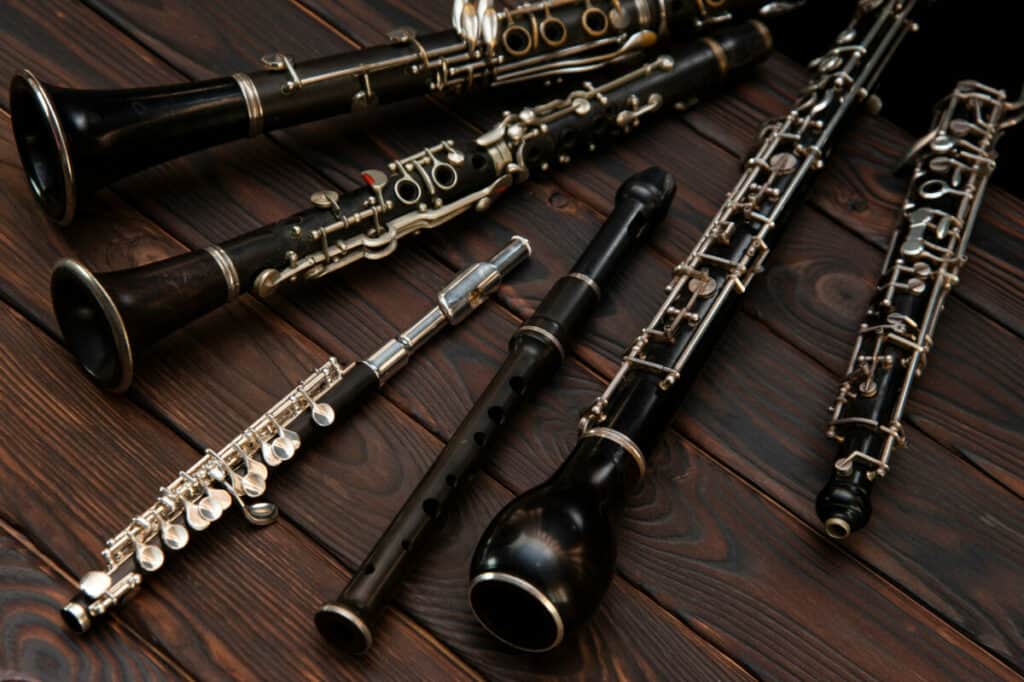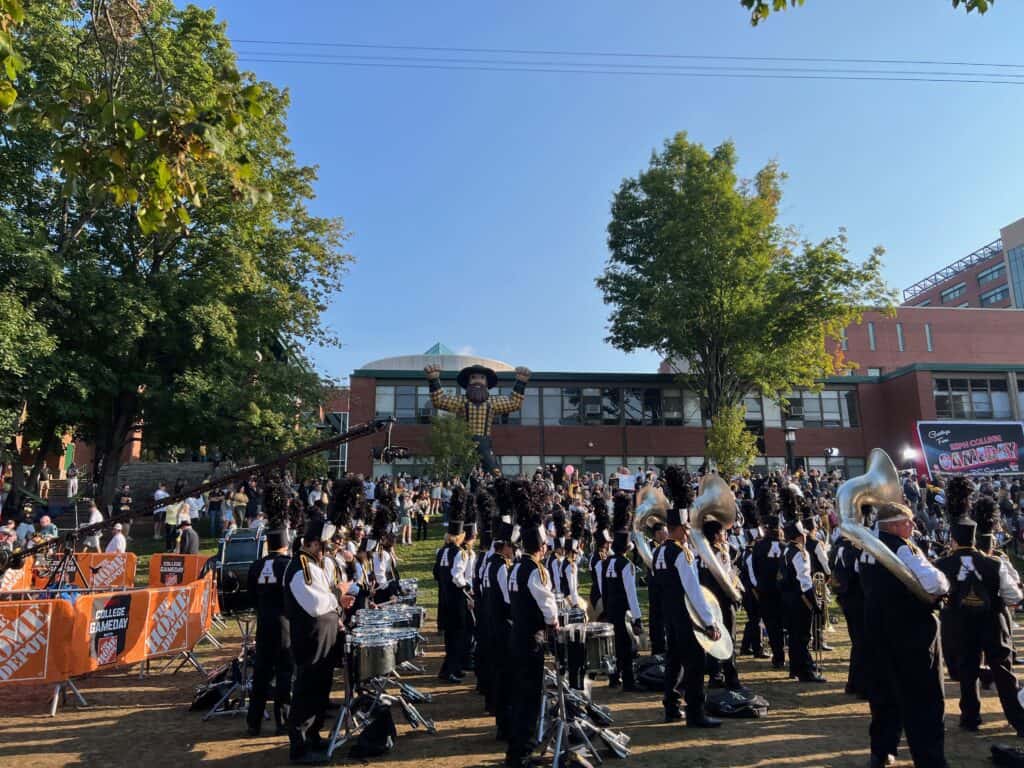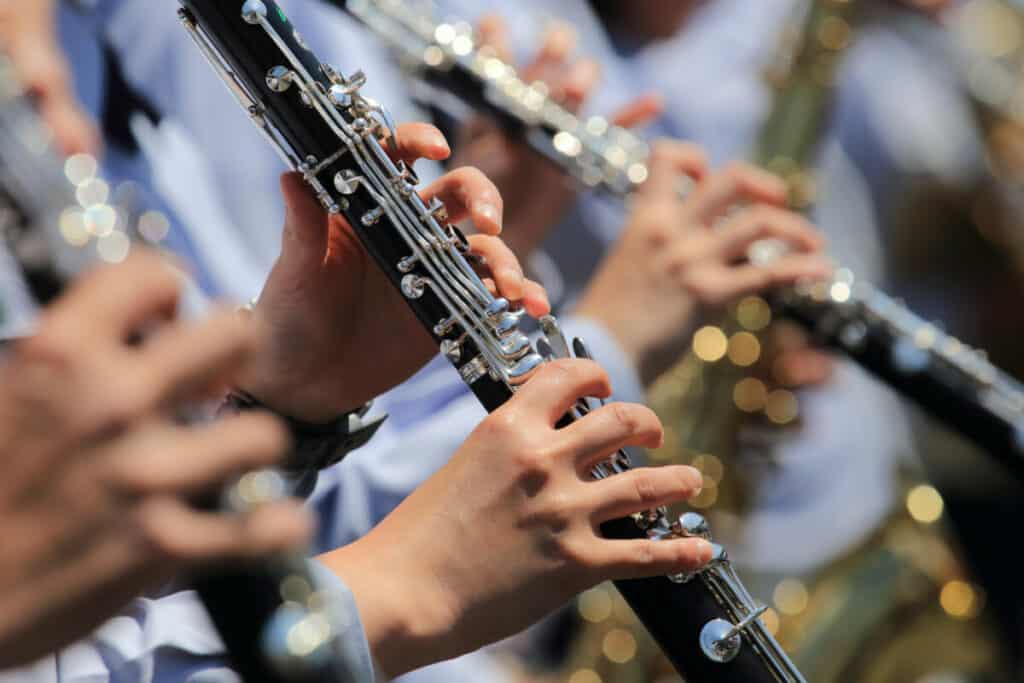do college marching bands have woodwinds

Many people find themselves enjoying a college’s marching band while watching a football game, but most are unaware of which types of instruments are being played on the field. Unless you’re familiar with the various instruments that make up a band, it can be challenging to identify whether there are brass instruments or woodwind instruments being played. So, do college marching bands have woodwind instruments?
There are woodwind instruments played in college marching bands. These instruments generally play the higher parts and melody in a performance. Woodwinds such as flutes, piccolos, and clarinets are common in marching bands, while the oboe and bassoon are not, due to their sensitivity to weather.
Learning about different instruments in a marching band can be confusing and overwhelming to those unfamiliar with the subject.
There can be a lot of information found pertaining to the instruments in a marching band, which can make it difficult for you to find the answers to whatever questions you may have.
After conducting research about college marching bands, the following information has been compiled below to help you better understand what woodwind instruments participate in a marching band.

What Woodwind Instruments are in College Marching Bands?
While there are a few types of woodwind instruments that are not found in a college marching band, there are many that you will see marching on the field during the halftime of a football game.
Some of the middle ranged instruments include the alto saxophone, tenor saxophone, and clarinet. While each of these instruments can be used to play lower notes, they are typically used to help carry the melody or harmonize with it.
In addition to saxophones and clarinets, college marching bands often feature flutes and piccolos in their woodwind section. The instruments are often used to play the melody at a higher pitch than many of the other instruments that are playing the melody.
Flutes and piccolos are able to play notes that are so high they can carry over the other instruments and be heard by individuals in the crowd, even with the large amount of open space that marching bands work with outdoors.

How Different Families of Woodwinds Perform in Marching Bands
As aforementioned, woodwind instruments such as the flute, clarinet, alto saxophone, tenor saxophone, and piccolos are commonly featured in marching bands. However, there are many other woodwinds that are typically only seen in concert bands and other ensembles that perform indoors and on stages.
There are a few reasons for this division, one of which applies to the reed inside the instrument. The clarinet, saxophone, piccolo, and flute are all referred to as “single reed instruments” because they only have one reed inside of them that is used to produce sound.
Other woodwind instruments belong to the “double reed” family, which includes woodwinds such as the oboe and bassoon. Double reed instruments are much more sensitive, and this delicacy makes it more difficult to play these instruments outdoors and march around as is done in marching bands.
This is why it is much more common to see the single reed instruments being played by marching instrumentalists, and these double reed instruments being featured in stationary and indoor ensembles.
This being said, there are occasions in which bassoons or oboes can participate in a performance. These instrumentalists need to be more aware of their instruments and take additional precautions to protect their delicate natures.
Another reason there may not be woodwind instruments is that that specific marching band wants to have that all-brass sound. These bands are looking for a specific sound that can only be achieved by only having brass instruments. This will depend on the instructor, but most college marching bands will include woodwinds.
Caring for Woodwind Instruments in Extreme Weather
One of the largest reasons you may not see woodwind instruments on the field is the weather. This could also include rain, snow, sleet, hail, or extremely high or low temperatures.
Each will have a different, negative impact on woodwind instruments if not cared for and protected as they should be.
Extremely high and low temperatures will impact nearly any instrument in the way it can play. Woodwind instruments and many brass instruments are more than likely to play sharp in hot weather.
Marching bands performing in the heat should keep this in mind and adjust how they play to account for this difference. In contrast, colder temperatures will cause woodwinds and other marching band instruments to play flat, requiring a different kind of adjustment in playing technique.
Marching band performers should know how their instrument behaves in different climates, especially outdoors.
If the weather is wet, or there is a chance it could be wet, the band may opt to keep their woodwinds off the field.
While many of these instruments can safely endure minimal contact with water, this should be avoided as much as possible, as the exposure can have detrimental repercussions on the state of the instrument and its ability to play properly.
Water damage to any instrument can be incredibly tragic and cause many issues that are difficult or impossible to fix. These repairs, when possible, are also very expensive, sometimes costing more than the price of a brand-new instrument entirely!
However, rain is not the only way that water can damage woodwinds. The moisture in the air can greatly impact the lifespan of a woodwind, especially when not cared for properly.
For those playing woodwinds outside in humid locations, be sure to pull a dry swab through the instrument after every time it is played. In drier areas, be aware of cork joints that can dry up and stick together.
Cork grease should be applied periodically and is likely necessary more often in places that have lower humidity levels. Reeds should be stored in specific cases rather than inside the instrument to control the humidity levels more efficiently.
